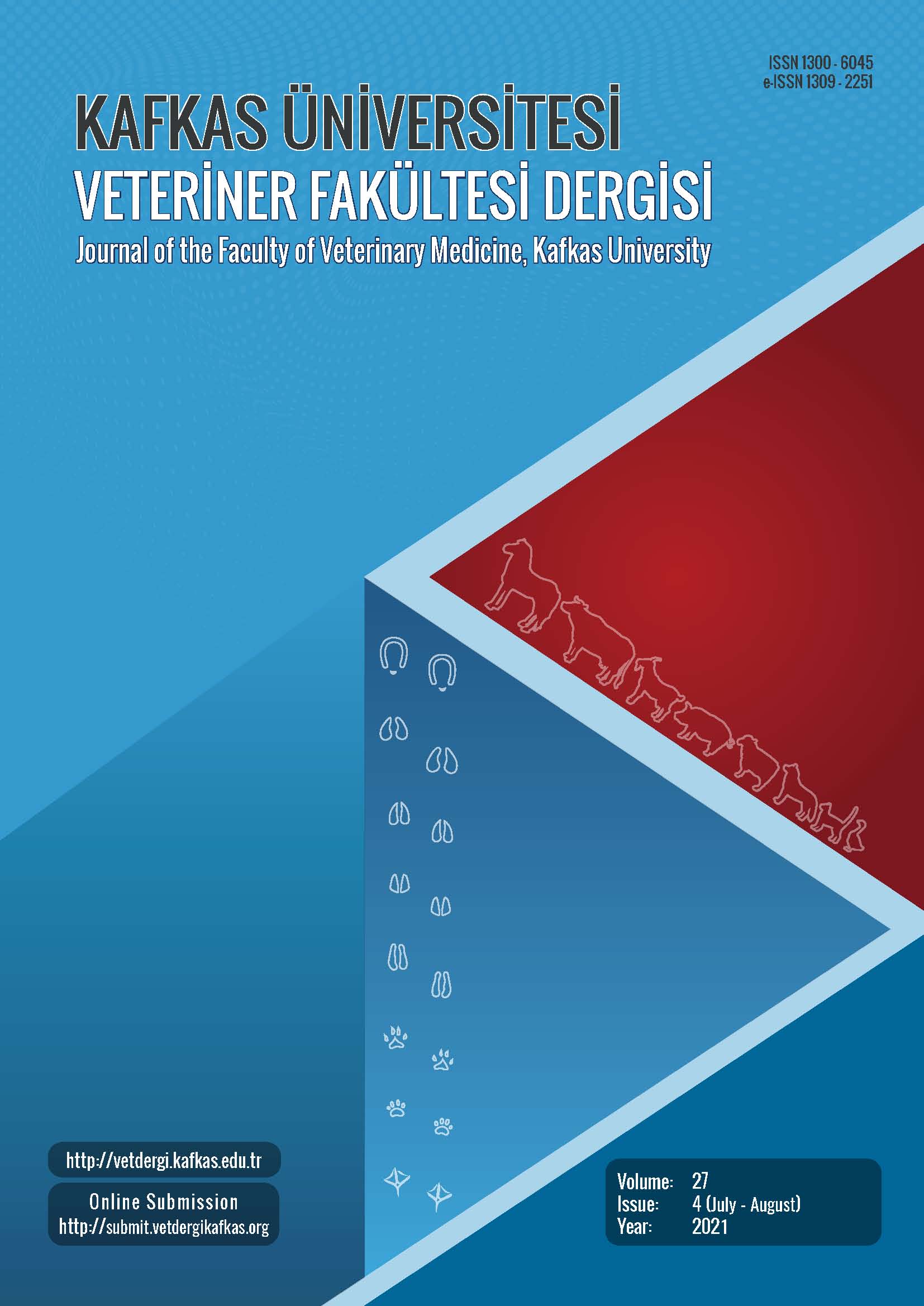
This journal is licensed under a Creative Commons Attribution-NonCommercial 4.0 International License
Kafkas Üniversitesi Veteriner Fakültesi Dergisi
2021 , Vol 27 , Issue 4
Comparative Analysis of the Heart Tissue Transcriptomes Between Low-altitude Reared and High-altitude Reared Bar-headed Geese (Anser indicus)
1State Key Laboratory of Plateau Ecology and Agriculture, Qinghai University, Xi’ning 810016, Qinghai Province, CHINA2Northwest Institute of Plateau Biology, Chinese Academy of Sciences, Xi’ning 810008, Qinghai Province, CHINA
3Xi’ning wild animal epidemic disease monitoring station, Xi’ning 810001, Qinghai Province, CHINA
4Federal Research Center of Fundamental and Translational Medicine, Novosibirsk 630117, RUSSIA DOI : 10.9775/kvfd.2020.25704 The bar-headed geese (Anser indicus) are renowned for high-altitude migratory fl ights and they must fl y over the Qinghai-Tibetan Plateau for their annual migration. Through comparing the high-altitude bar-headed geese with the other closely related low-altitude species, many eff orts have been made to reveal the unique adaptations at physiological, biochemical, and behavioral levels that help bar-headed geese living and fl ying in high-altitude conditions. Nonetheless, little is known about the transcriptome level changes of the bar-headed geese adaptation to low-altitude environment. To explore the variations of gene expression that were induced by low-altitude environment in the bar-headed geese, we conducted the first comparative transcriptomic analysis of heart tissues between bar-headed geese reared in high-altitude regions (~3000 m), and the bar-headed geese reared at the low-altitude regions (~30 m) for nearly three years. A total of 76 diff erentially expressed genes (DEGs) were detected in the low-altitude bar-headed geese compared with the high-altitude bar-headed geese. Gene ontology (GO) and Kyoto Encyclopedia of Genes and Genomes (KEGG) analysis showed that these DEGs were mainly involved in the focal adhesion, extracellular matrix (ECM) - receptor interaction, the mammalian target of rapamycin (mTOR) signaling pathway, wingless-type (Wnt) signaling pathway, and glycosaminoglycan degradation etc. The results will be useful for understanding the divergent adaptation of the bar-headed geese to diff erent altitude environment, and the transcriptome data provides a valuable resource for future functional studies. Keywords : Anser indicus, Transcriptome, Adaptation, Altitude, Heart










